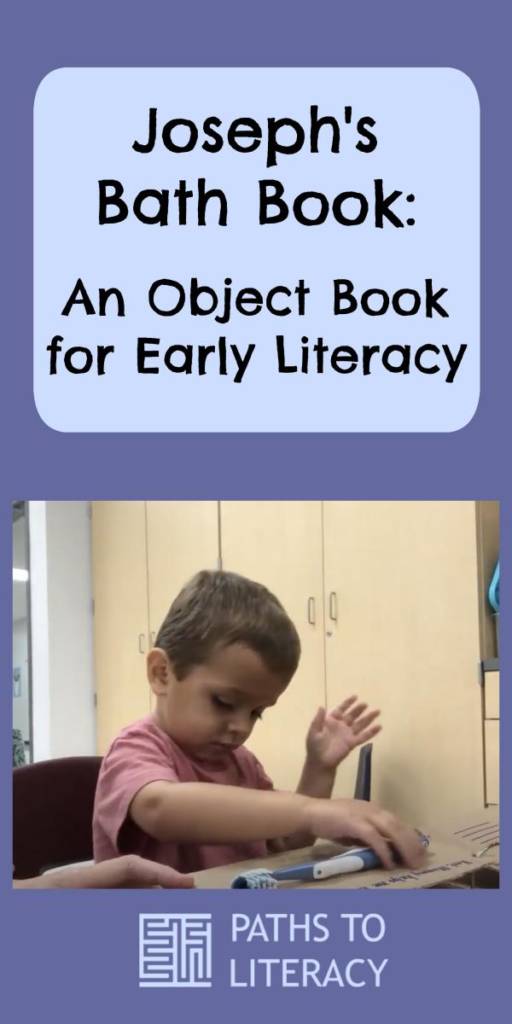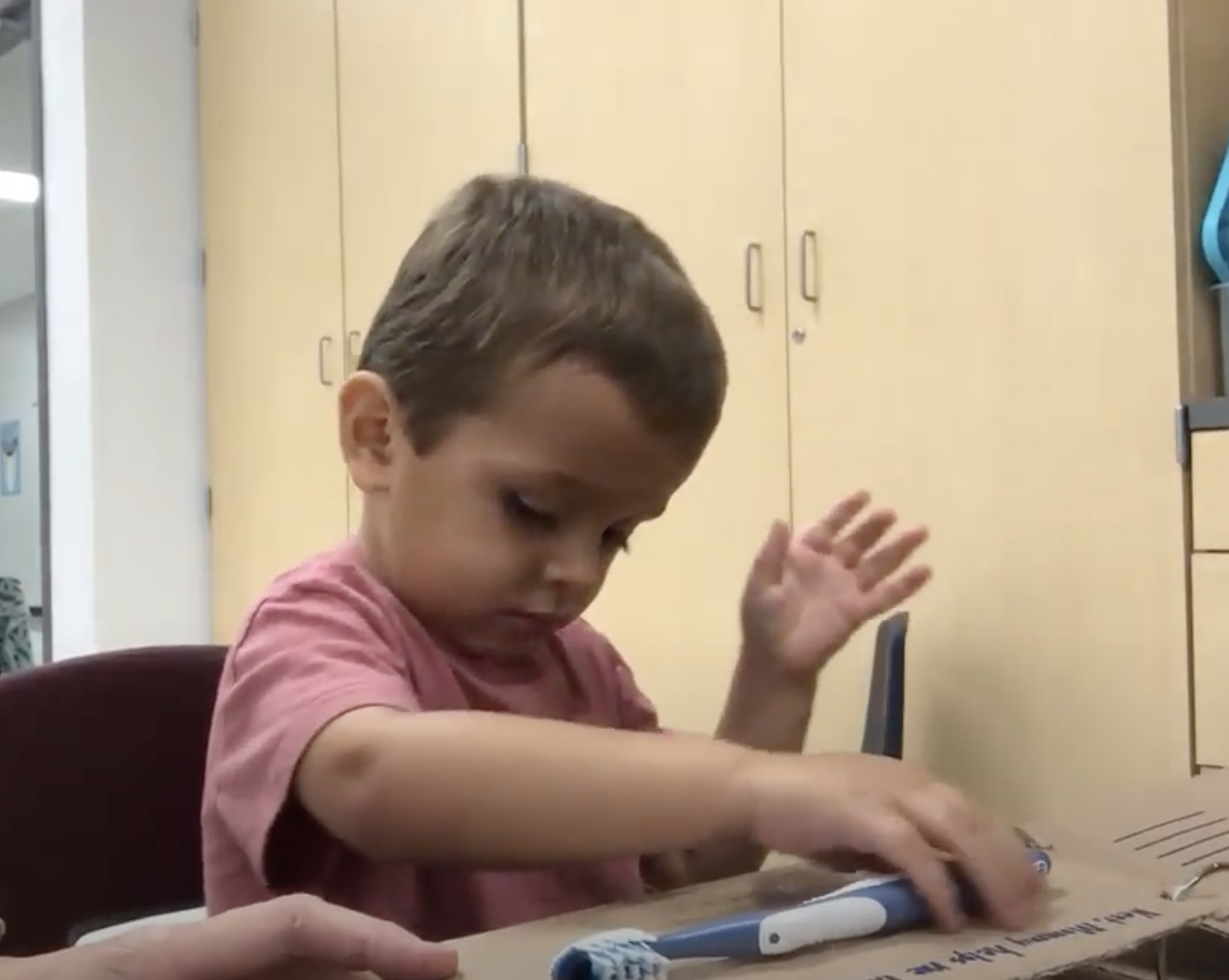In the early stages of literacy, real objects can be attached to each page, so that the child can explore each item and interact with it. In the book shown in this video, for example, there is a light switch that turns a real light on and off. Attaching real objects to pages can help to make the bridge from an actual experience to beginning literacy.
Choosing a Topic for an Object Book
When creating beginning object books, start with a familiar topic, such as a routine like bath time, bed time, or meal time. Books can also be made about a meaningful experience, such as special events (e.g. a birthday party) or a place (outside) or a familiar person or pet. Use real objects from the experience, and be sure to avoid miniatures.
Making the Book
- Items can be attached to each page with Velcro, so that the child can pull them off and use them (e.g. using a comb to comb hair).
- Pages should be very sturdy, such as the pages shown here, which are pieces of cardboard.
- Print and braille can be added to each page to provide exposure to the child, as well as to give adults consistent text when reading the book.
- Large metal rings can be used to hold the book together. These rings also make it easy to add or remove a page.
Reading the Book Together
This is a great way to introduce basic book handling skills and concepts, such as turning the page. Notice that the teacher, Julie, leaves off the last word of each sentence, which helps to reinforce language development and prediction skills. For example, “Mommy helps me to brush my _______.”





